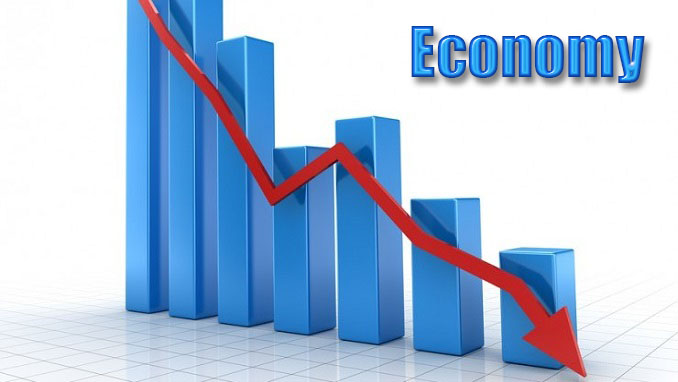- Submit News
- 501-666-6726
- [email protected]

Archaeologists studying Maya find widespread changes to wetlands in northwestern Belize
May 13, 2021
U.S. Centers for Disease Control says those fully vaccinated can go without mask indoors and outdoors
May 13, 2021Posted: Thursday, May 13, 2021. 1:28 pm CST.
By Aaron Humes: The World Bank’s latest Migration and Development Brief cites a decline of just $8 billion in remittance flows in 2020, despite the issues with COVID-19. The 1.6 percent reduction is smaller than the 4.8 percent seen during the 2009 global financial crisis, and lower than the fall in foreign direct investment (FDI) flows to low- and middle-income countries, which, excluding flows to China, fell by over 30 percent in 2020. As a result, remittance flows to low- and middle-income countries surpassed the sum of FDI ($259 billion) and overseas development assistance ($179 billion) in 2020.
The main drivers for the steady flow included fiscal stimulus that resulted in better-than-expected economic conditions in host countries, a shift in flows from cash to digital and from informal to formal channels, and cyclical movements in oil prices and currency exchange rates. The true size of remittances, which includes formal and informal flows, is believed to be larger than officially reported data, though the extent of the impact of COVID-19 on informal flows is unclear.
Remittance inflows rose in Latin America and the Caribbean (6.5 percent), South Asia (5.2 percent) and the Middle East and North Africa (2.3 percent). However, remittance flows fell for East Asia and the Pacific (7.9 percent), for Europe and Central Asia (9.7 percent), and for Sub-Saharan Africa (12.5 percent). The decline in flows to Sub-Saharan Africa was almost entirely due to a 28 percent decline in remittance flows to Nigeria. Excluding flows to Nigeria, remittances to Sub-Saharan Africa increased by 2.3 percent, demonstrating resilience.
The World Bank is assisting member states in monitoring the flow of remittances through various channels, the costs and convenience of sending money, and regulations to protect financial integrity that affect remittance flows. It is working with the G20 countries and the global community to reduce remittance costs and improve financial inclusion for the poor.
With global growth expected to rebound further in 2021 and 2022, remittance flows to low- and middle-income countries are expected to increase by 2.6 percent to $553 billion in 2021 and by 2.2 percent to $565 billion in 2022. Even as many high-income nations have made significant progress in vaccinating their populations, infections are still high in several large developing economies and the outlook for remittances remains uncertain.
The global average cost of sending $200 remained high at 6.5 percent in the fourth quarter of 2020, more than double the Sustainable Development Goal target of 3 percent. Average remittance costs were the lowest in South Asia (4.9 percent), while Sub-Saharan Africa continued to have the highest average cost (8.2 percent). Supporting the remittance infrastructure and keeping remittances flowing includes efforts to lower fees.
In Latin America and the Caribbean, while COVID-19 caused a sudden decrease in the volume of remittances in the second quarter of 2020, remittances rebounded during the third and fourth quarters. The improvement in the employment situation in the United States, although not yet to pre-pandemic levels, supported the increase in remittance flows to countries such as Mexico, Guatemala, Dominican Republic, Colombia, El Salvador, Honduras and Jamaica, for whom the bulk of remittances originate from migrants working in the United States. On the other hand, the weaker economic situation in Spain negatively affected remittance flows to Bolivia (-16 percent), Paraguay (-12.4 percent) and Peru (-11.7 percent) in 2020. In 2021, remittance flows to the region are expected to grow by 4.9 percent. Remittance costs: The cost of remittance transfers to the region was 5.6 percent in the fourth quarter of 2020. In many smaller remittance corridors, however, costs continue to be exorbitant. For example, the cost of sending money to Cuba exceeds 9 percent. Sending money from Japan to Brazil is also expensive (11.5 percent).
Detailed analysis of global and regional trends are available in the Migration and Development Brief 34 at www.knomad.org and http://blogs.worldbank.org/peoplemove/.
Advertise with the mоѕt vіѕіtеd nеwѕ ѕіtе іn Belize ~ We offer fully customizable and flexible digital marketing packages. Your content is delivered instantly to thousands of users in Belize and abroad! Contact us at mаrkеtіng@brеаkіngbеlіzеnеwѕ.соm or call us at 501-612-0315.
© 2021, BreakingBelizeNews.com. Content is copyrighted and requires written permission for reprinting in online or print media. Theft of content without permission/payment is punishable by law.



































































Comments